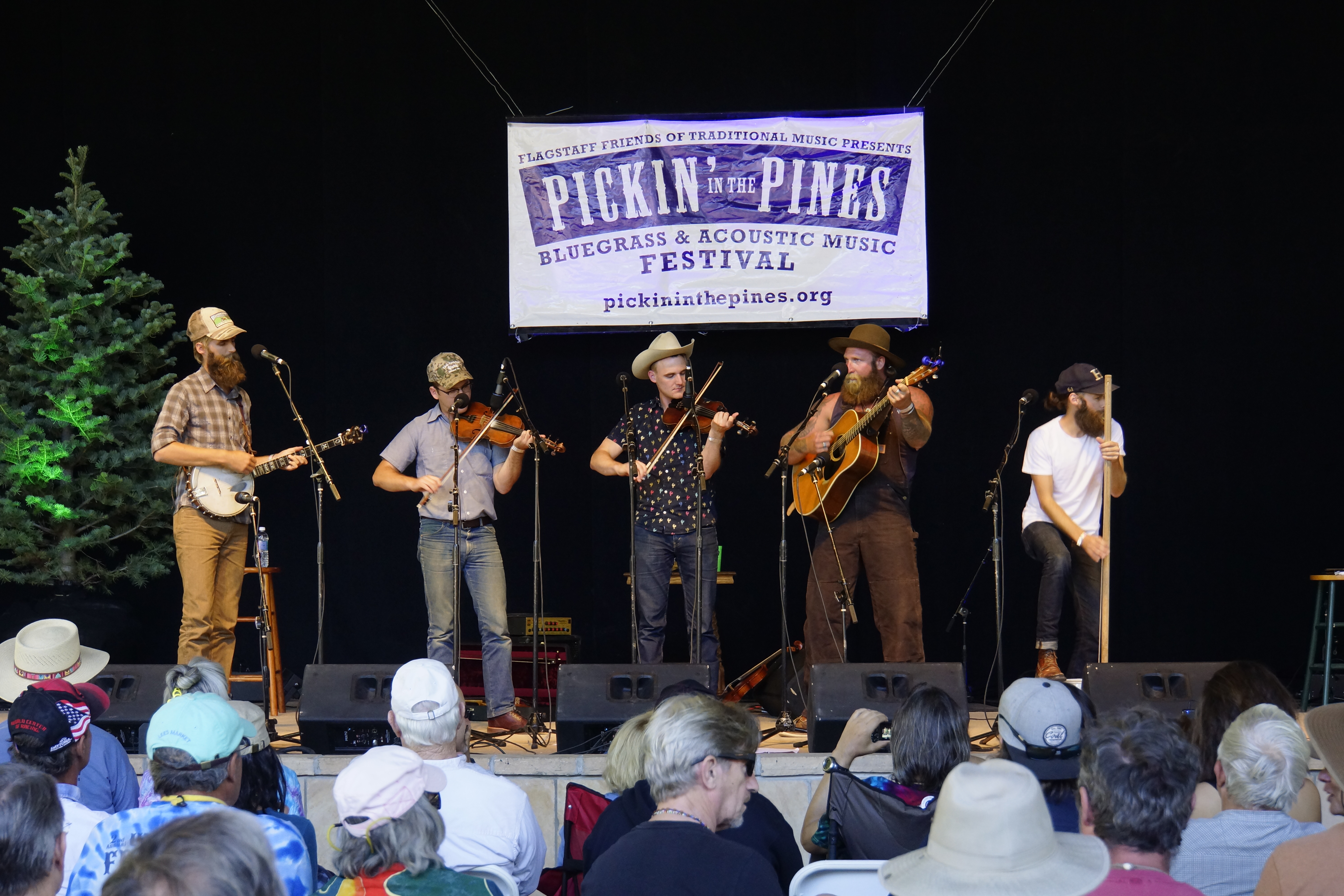Tall Pines and Bluegrass Pickin’

Writer Amanda Christmann
[dropcap]B[/dropcap]ack in the 1600s, a wave of immigrants from Ireland, Scotland and England made their way into remote areas of North and South Carolina, Tennessee, Kentucky, Virginia and West Virginia, bringing with them ideas and music from their native countries. As they cultivated the land and forged new lives, they began singing songs and playing music that not only reflected their day-to-day struggles, happiness and loves, but that also gleaned bits and pieces of the cultures from which they came.
With homespun instruments, from porches and in tiny taverns, they sang of life in the hills, strumming, blowing and crooning the first notes of what would become “mountain music” or “country music.”
By the time radio began pumping music into living rooms across the country, mountain music had branded itself as the music of the Appalachians and beyond. Artists Charlie and Bill Monroe were among the first to emerge onto the music scene in the 1920s and 30s, and when the brothers split to form their own bands, Bill decided to name his troupe after his native Kentucky: Bill Monroe and the Bluegrass Boys. It was the beginning of the first era of bluegrass music.
In 1945, a 21-year-old banjo player with a three-finger picking style named Earl Scruggs and Tennessee-born Lester Flatt, whose guitar and vocals were equally innovative, joined the band. Their sound became iconic, and they would go on to lead what would become considered the original bluegrass band.
Today, bluegrass has grown to command its own niche in the music scene, often spreading its wings into mainstream country and blues along the way. Bluegrass bands today are just as unique, and often as talented, as their early forefathers.
For the last 13 years, Flagstaff has celebrated bluegrass and its roots at Pickin’ in the Pines Bluegrass and Acoustic Music Festival at Fort Tuthill County Park on the outskirts of town. It’s fun for everyone, and voted “Best Festival in Flagstaff” last year by Arizona Daily Sun.
The lineup, which weaves old-time, Celtic, and gypsy jazz into the mix, includes several Grammy and IBMA award-winning performers, including Del McCoury Band, Béla Fleck, The Infamous Stringdusters, The Travelin’ McCourys, Seldom Scene, Jeff Austin Band, The Grateful Ball, Della Mae, Dom Flemons, Hogslop String Band, Jeff Scroggins & Colorado, The Good Time Travelers, Billy Parker & Mandoclectic, The Knockabouts, Greg Blake Band, Jesse Anderson, Cadillac Mountain, and Matt and Rebekah Rollan from Run Boy Run.
Kick it up at a community barn dance Sept. 14 at 9:15 p.m. Don’t worry if you don’t know how to tap your toes to a hoedown! There will be family dance instruction and plenty of opportunity to learn and laugh.
Dancing isn’t the only thing you’ll learn. Free lessons on guitar, banjo, fiddle, ukulele and harmony singing are part of the festival’s workshop series. Wernick Method Bluegrass Jam Class will once again give beginners and advance players an opportunity to jam together in a special reservations-only workshop.
Three-day and single-day tickets are available online, and camping is available, but almost sold out, at the time of print.
Pickin’ in the Pines is one of the most unique and family-friendly music events in Arizona. Though the mountains of Flagstaff may not resemble its Blue Ridge and Smokey Mountain home, bluegrass remains true to its roots in the cool Arizona pines.
Pickin’ in the Pines Bluegrass &
Acoustic Music Festival
Friday–Sunday, September 14–16
See website for schedule
Fort Tuthill County Park
2446 Fort Tuthill Loop, Flagstaff
$50–$140; children under 15 free; parking passes additional
pickininthepines.org

